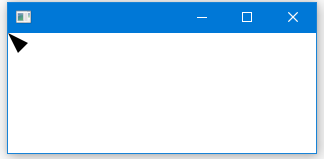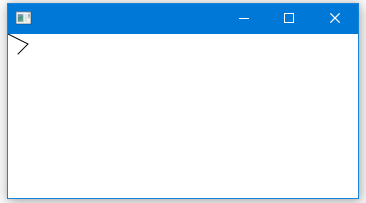JavaFX多邊形摺線
JavaFX多邊形摺線
多邊形,一個簡單的範例程式碼如下所示 -
import javafx.application.Application;
import javafx.scene.Group;
import javafx.scene.Scene;
import javafx.scene.shape.Polygon;
import javafx.stage.Stage;
public class Main extends Application {
// create w w W. y II b Ai .c o M
@Override
public void start(Stage stage) {
Group root = new Group();
Scene scene = new Scene(root, 260, 80);
stage.setScene(scene);
Group g = new Group();
Polygon polygon = new Polygon();
polygon.getPoints().addAll(new Double[]{
0.0, 0.0,
20.0, 10.0,
10.0, 20.0 });
g.getChildren().add(polygon);
scene.setRoot(g);
stage.show();
}
public static void main(String[] args) {
launch(args);
}
}
上面的程式碼生成以下結果。

折線範例,一個簡單的範例程式碼如下所示 -
import javafx.application.Application;
import javafx.scene.Group;
import javafx.scene.Scene;
import javafx.scene.shape.Polyline;
import javafx.stage.Stage;
// copyright wWW .Y II b Ai .c O m
public class Main extends Application {
@Override
public void start(Stage stage) {
Group root = new Group();
Scene scene = new Scene(root, 260, 80);
stage.setScene(scene);
Group g = new Group();
Polyline polyline = new Polyline();
polyline.getPoints().addAll(new Double[]{
0.0, 0.0,
20.0, 10.0,
10.0, 20.0 });
g.getChildren().add(polyline);
scene.setRoot(g);
stage.show();
}
public static void main(String[] args) {
launch(args);
}
}
上面的程式碼生成以下結果。
